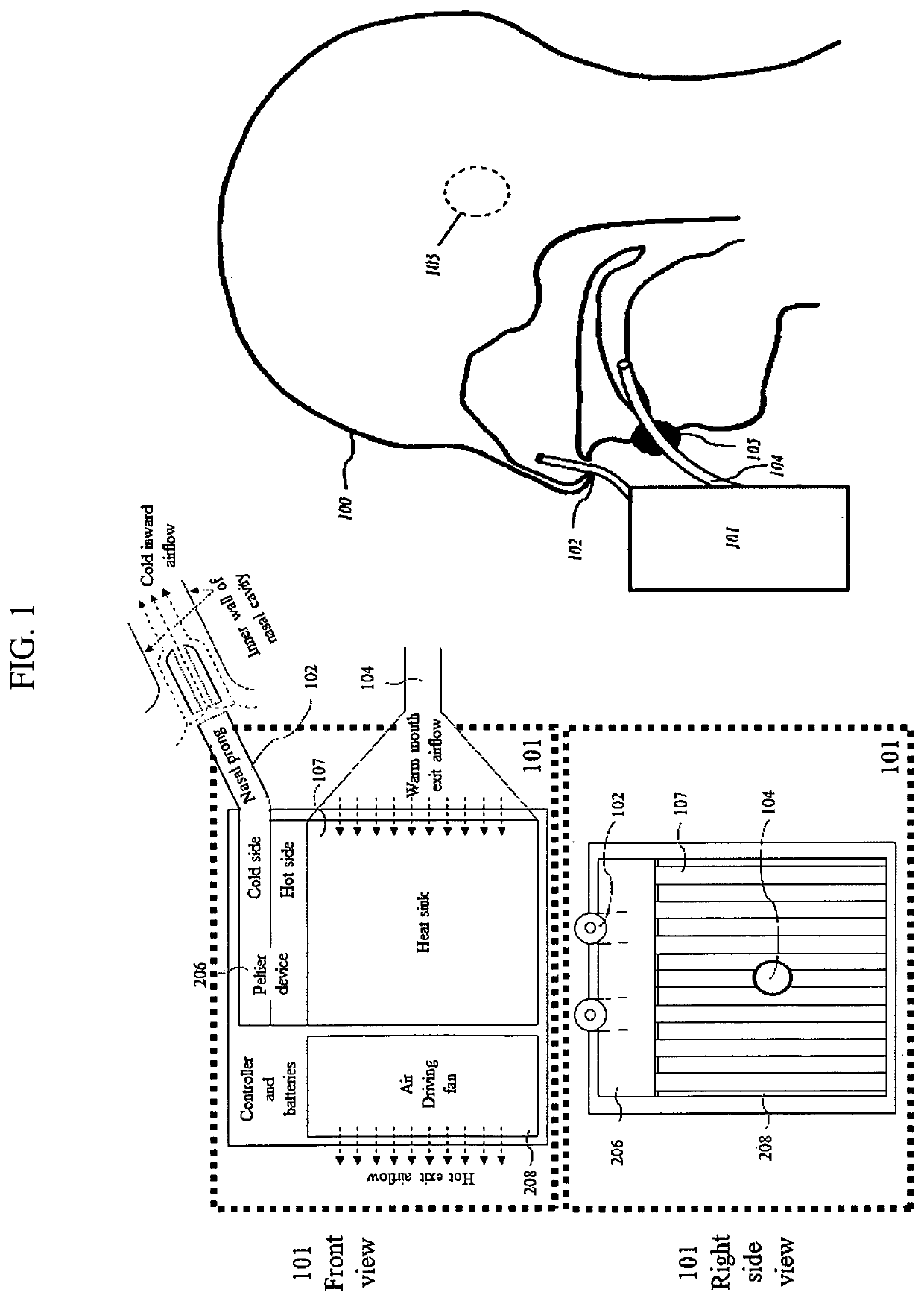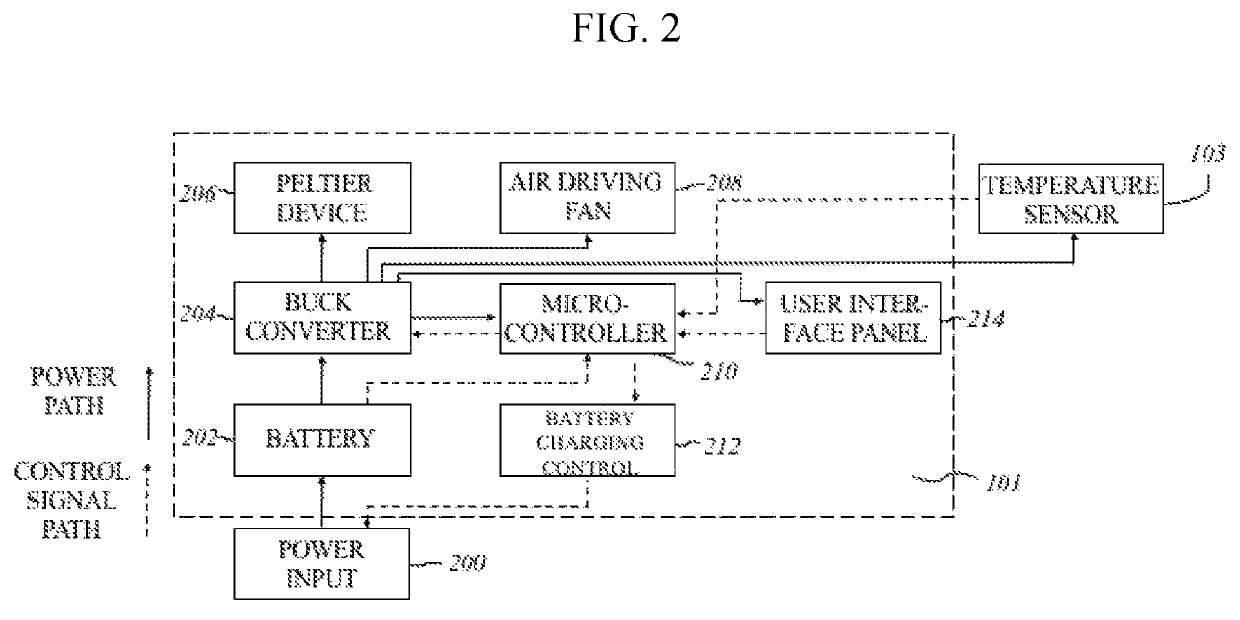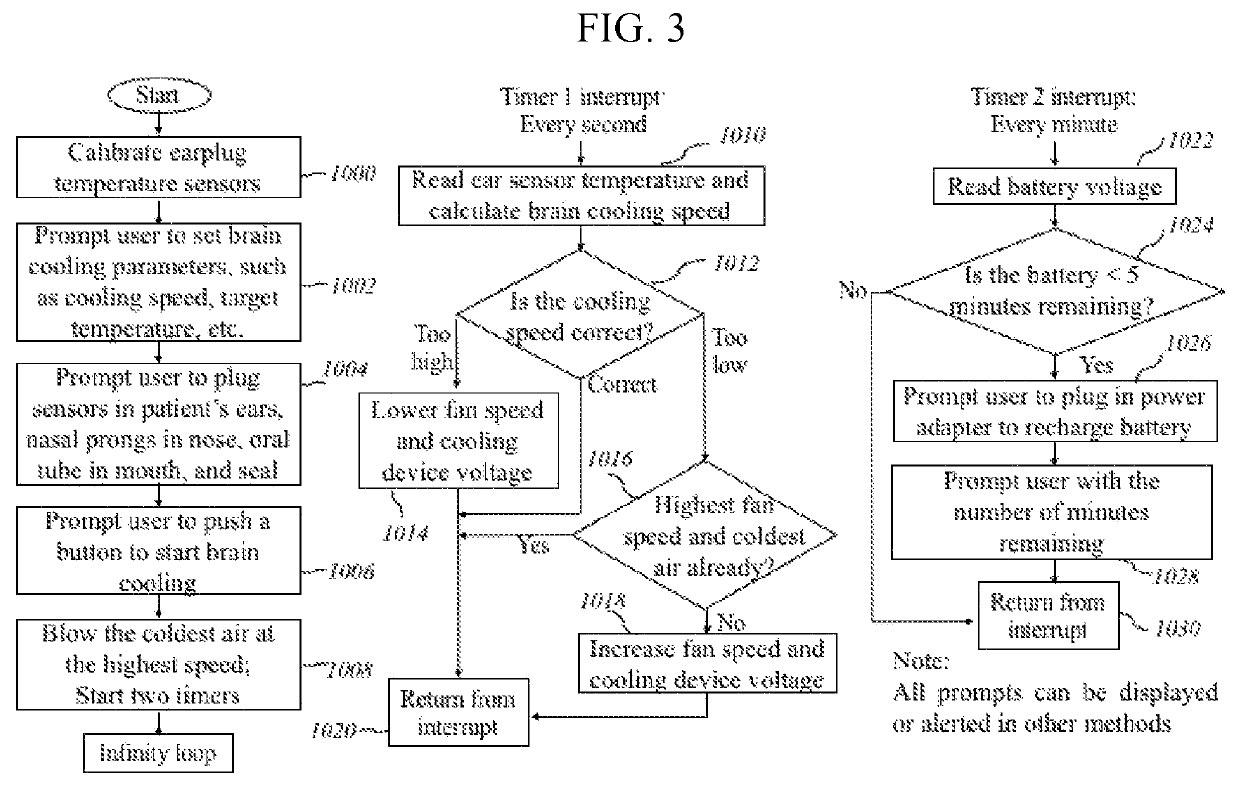Brain cooling method and portable device
a brain cooling and portable technology, applied in the field of brain cooling methods and portable devices, can solve the problems of brain damage, brain damage, and brain damage, and achieve the effects of mild brain cooling, reduced perfusion to the brain, and mild brain damag
- Summary
- Abstract
- Description
- Claims
- Application Information
AI Technical Summary
Benefits of technology
Problems solved by technology
Method used
Image
Examples
Embodiment Construction
[0036]The detailed embodiments of the present invention are disclosed herein. The invention is not limited to the disclosed description, which is merely exemplary of the embodiments of the invention. The invention can be embodied in different forms without departure from the principle introduced here.
[0037]In accordance with the present invention, and with reference to FIG. 1-3, a cooling device for noninvasive nasopharyngeal cerebral cooling is disclosed. One form of the invention is illustrated and is indicated in general by numeral 101. The device 101 has a cooling source composed of solid-state coolers 206, and a temperature-sensing accessory 103. These elements are coupled with nasal prongs 102, and oral tube 104 for circulation of air through the nasal and oral cavities, particularly, the upper nasal cavity. A control sub-system controls the cooling elements and monitors cerebral temperatures. As such, the microcontroller 210 receives input data from the temperature sensor 103...
PUM
 Login to View More
Login to View More Abstract
Description
Claims
Application Information
 Login to View More
Login to View More - R&D
- Intellectual Property
- Life Sciences
- Materials
- Tech Scout
- Unparalleled Data Quality
- Higher Quality Content
- 60% Fewer Hallucinations
Browse by: Latest US Patents, China's latest patents, Technical Efficacy Thesaurus, Application Domain, Technology Topic, Popular Technical Reports.
© 2025 PatSnap. All rights reserved.Legal|Privacy policy|Modern Slavery Act Transparency Statement|Sitemap|About US| Contact US: help@patsnap.com



